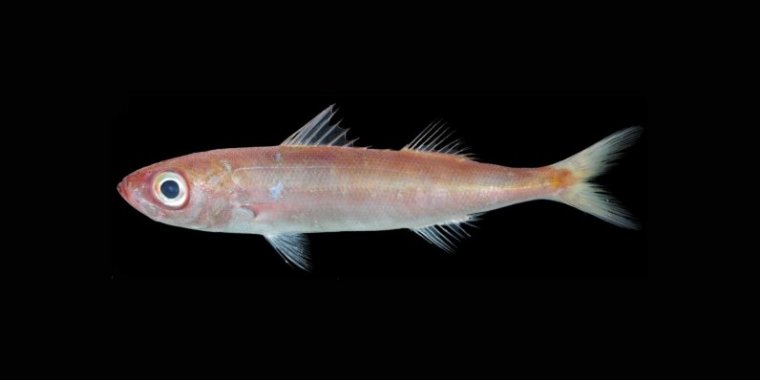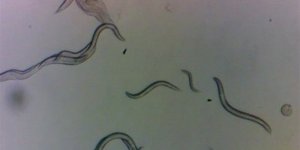| News / Science News |
NOAA Fisheries Zoologist Describes New Fish Species
Dr. Katherine Bemis of NOAA Fisheries' National Systematics Laboratory and her collaborators recently described a new fish species: Emmelichthys papillatus, or the papillated redbait.

New species Emmelichthys papillatus Girard, Santos, and Bemis 2024, also known as the papillated redbait. It will be known by its Tagalog name, rebentador pula, in its native range of the Philippines. Photo: Kagoshima University Museum.
The papillated redbait is a member of the family Emmelichthyidae. There are only 18 known species in this family, which are commonly called redbaits, rovers, or rubyfishes. These deepwater species can be found in warm, tropical waters and are usually bright shades of red, orange, and pink.
As part of an interagency campaign to create a reference library of fish DNA “barcodes,” Bemis and her colleagues regularly travel abroad to collect fish specimens. Some come from seafood markets overseas where they are being sold for food. In the field, these new specimens are assigned a preliminary species identification.
Then, they’re transported to the Smithsonian Institution and National Systematics Laboratory for genetic sequencing, data collection, and a secondary species confirmation.
Since getting involved with this project in 2021, Bemis and teammate Dr. Matthew Girard of the Smithsonian National Museum of Natural History have analyzed thousands of samples. None have made a bigger splash, though, than two small pink fish collected from a Philippine fish market on the island of Cebu.
While collecting data from these specimens, Girard made an exciting observation. Their genetic sequences did not match their initial species identification as golden redbaits—or any other species in the genetic library, for that matter.
While collecting data from these specimens, Girard made an exciting observation. Their genetic sequences did not match their initial species identification as golden redbaits—or any other species in the genetic library, for that matter.
Bemis and Girard examined other aspects of the specimens’ biology, including their anatomy. They discovered that these fish differed from the golden redbait in several ways, including a different number of gill rakers, structures inside the mouth that help fish to feed, a different number of pectoral fin rays, and two fleshy structures called papillae on the pectoral girdle.
These differences, combined with the genetic data, provided evidence that the two specimens were not golden redbaits, but a previously undiscovered species. With only two confirmed specimens, Bemis and Girard wondered if other individuals could be identified in global natural history collections.
Bemis and Girard spotted a third specimen they hypothesized might also be the undescribed species. A fish with similar color also identified as a golden redbait had been collected from a fish market in the Philippines by the Kagoshima University Museum in Japan. Bemis and Girard studied the specimen and confirmed their hypothesis with genetic and anatomical data.
This specimen became the third record of papillated redbait and, ultimately, the holotype for the species—the specimen upon which a new species description is based.
Bemis notes that because data on the papillated redbait comes from only three specimens purchased in fish markets, she still has lots of questions. For example, Bemis says that they don’t yet know if the new species occurs outside Philippine waters, or the exact habitat in which they occur.
“We also don’t know anything about their reproduction or what they eat—really basic aspects of their biology remain to be studied. Now that we recognize that it is different, we only have more to study as new specimens of papillated redbait are collected,” Bemis says.
One thing is for certain, though. There are more species just waiting to be discovered, and they might be right under our noses. “I think the craziest thing is that the papillated redbait is a new species that came from a market,” Girard says.
“The fact that there are undescribed species being sold without us even realizing it underscores how much we still have to learn about marine biodiversity.”
YOU MAY ALSO LIKE





